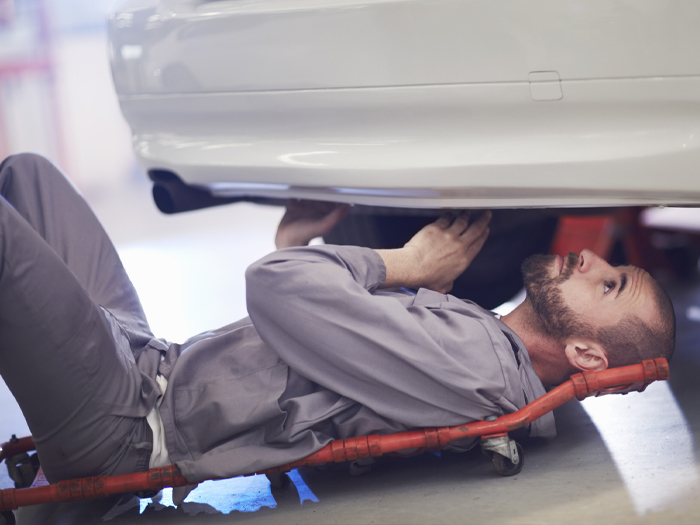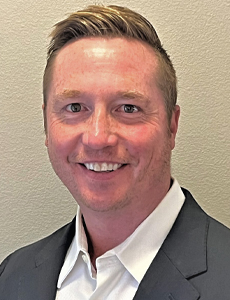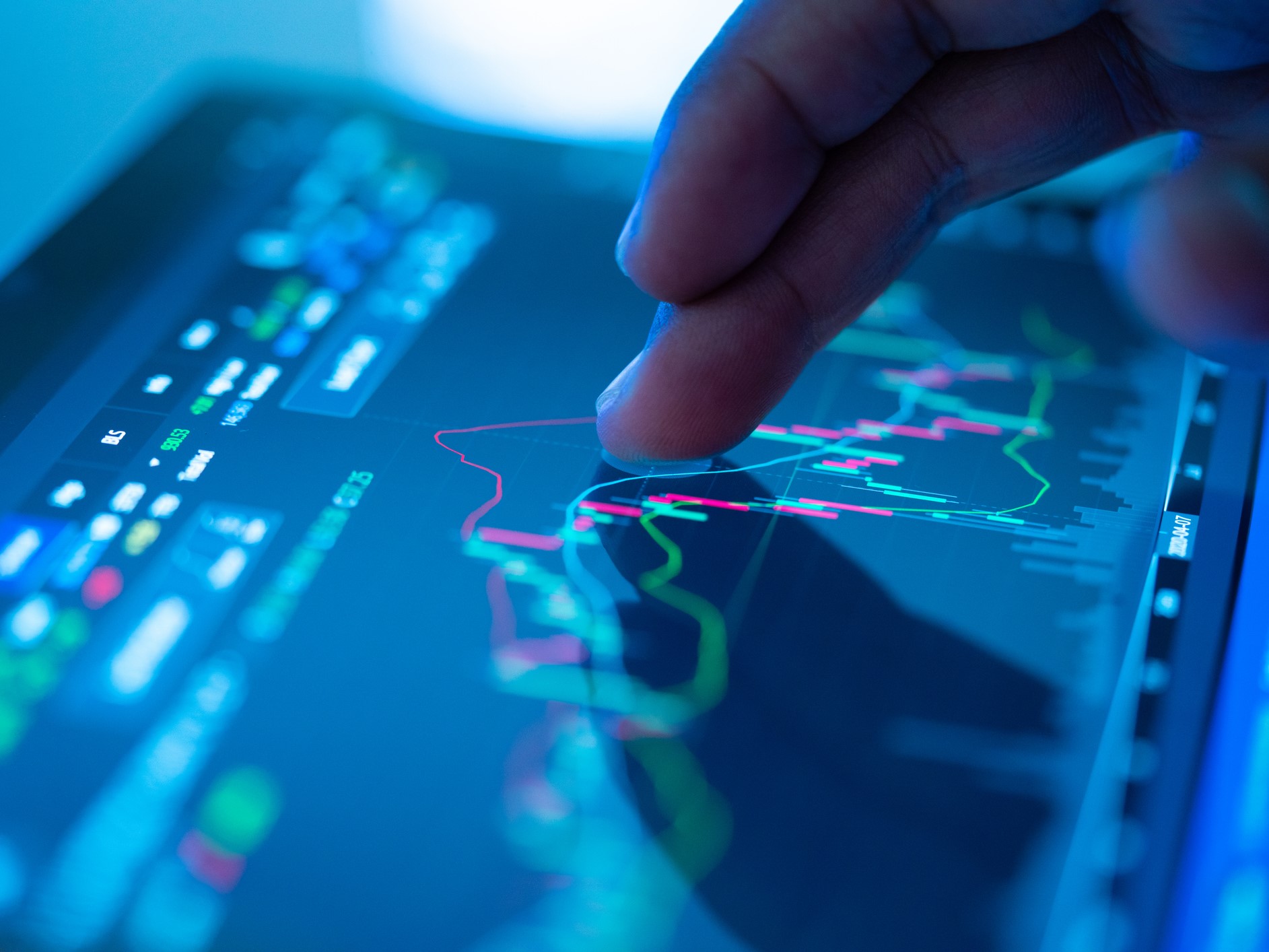The New Hard Hats: How Wearable Devices Are Reducing and Eliminating Injuries

It’s pretty impressive — some might even think impossible — for a company to reduce its average injury rate by nearly 60% in a single year.
Yet that’s exactly what one Kinetic-insured auto dealer did. It dropped from 30 to 40 injuries per year to just 10. Their solution? Wearable devices. The company had its workforce across all 10 of its locations wear devices that assessed their movements and alerted them when they were bending, lifting or twisting improperly.
“They put devices on their work force across all of their locations,” said Dale Hoppe, vice president of workers’ compensation and E&S/S programs at Nationwide. “Auto dealers are a challenging class, and they found that with those auto dealers who are going to take the devices and deploy them, they have a real success story.”
To better understand how wearable devices are changing the workers’ compensation insurance space, Risk & Insurance® sat down with Hoppe. Nationwide has a partnership with Kinetic Insurance, an MGU that offers wearable technology to its policyholders so they can leverage the data collected by these devices and use it to reduce losses. Kinetic hopes to expand into a number of safety-critical industries, including manufacturing, nursing homes, health care, auto dealers, parcel delivery services, janitorial and hospitality.
In this compelling discussion, Hoppe details the benefits of wearable technologies and shares strategies for encouraging employees to use this new tool, as well as his vision for a future where wearable devices are as ubiquitous a safety device as hard hats.
Risk & Insurance: Let’s talk a bit about the partnership between Nationwide and Kinetic — it’s a unique structure. Can you take me back to 2020-2021 and tell me a bit about the thinking that went into this approach, from Nationwide’s perspective?
Dale Hoppe: Nationwide has a ventures arm, Nationwide Ventures, and what it does is look for new and emerging technologies where Nationwide can invest. Ventures actually found Kinetic back in 2016. Haytham Elhawary, who is their principal and CEO, had developed this wearable device. He was getting the device out in the tech community, and Ventures caught on to what he was doing.
Once Kinetic was able to get some capital, they took their product to the self-insured space. It makes a lot of sense. If you have a wearable product and you go to the self-insurance market, you have a captive audience. So from 2016 to when we got introduced to Kinetic in 2020, they really started making a meaningful impact in the self-insured space.
My job is to look at — especially when we have startups — what industries can an MGU serve that are maybe underserved? Is an MGU going to bring something unique, from a product perspective, to the market?
We stood up the MGU, and they actually wrote their first policy in December 2021. Since we’ve launched, it’s been wildly successful.
R&I: You have a solid group of verticals you’re targeting — really, a large swath of the U.S. workforce could be potentially impacted by this. What is your hope for the impact on these industries in the longer term?

Dale Hoppe, vice president of workers’ compensation and E&S/S programs at Nationwide
DH: My hope for any wearable and quite frankly any e-safety apparatus is that it becomes an expectation of an employee when they go to work. I think about manufacturing, where the first thing you do when you enter a manufacturing facility is put on your hard hat and safety goggles. I truly believe if we want to reduce injuries and put a holistic emphasis on workplace safety, then something like a wearable becomes like a hard hat.
What we’re doing is training people in a way that is eliminating bad behaviors. We all get busy at work, and when we get busy is when we get sloppy. This tool can give you a reminder that “Hey, you’re lifting wrong,” or “Hey, you’re bending wrong,” or “Hey, you’re twisting wrong.” It’s just a reminder to yourself to slow down, to go back to your training and have appropriate body mechanics.
I firmly believe that outside of accidents, we can avoid a lot of workplace injuries just by reminding people how to do the job safely. Wearables do just that.
R&I: The wearable technology works by providing feedback in real time on at-risk motions. But it’s also collecting data at the same time. How else are you able to leverage that data?
DH: This data is giving employers targeted ways they can focus on safety, ways they can focus on training. These insights will tell them if they see more high-risk behaviors at one specific facility, and maybe within that facility on a particular line.
Then, maybe they can go and assess the ergonomics of that particular line, because if there are more high-risk postures — which is what this device is really measuring — it’s recording that. Then an employer can take that and say, “OK, we clearly have something going on here. Let’s go assess the workplace and maybe there’s something from an ergonomic perspective that we can change.” And that’s what employers are doing.
It’s basically targeted loss control. They know where they need to do their targeted training. They know exactly where the high-risk postures are happening, and now they can focus on that area. Again, if it’s operations or logistics, maybe they can change something in the way people are interacting there.
R&I: We’ve mostly discussed the impact this could have for large employers with multiple facilities or those who are self-insured. Is there still potential for an impact for medium-sized employers or small employers who have some of these same challenges?
DH: I absolutely think there is. Consider the parcel space. Most of these parcel accounts, they’re running crews with eight to 12 trucks. With a small operation like this, they might not have someone doing formal safety training on a routine basis.
What we’ve learned in this space is wearable devices are giving employers targeted insights, which allows focused efforts in managing the business. The device can supplement as a training arm because the premise is that it is modifying employee behavior over time.
R&I: Let’s dig into the buy-in piece a little bit. I know company culture is so important when it comes to implementing any kind of safety program. When it comes to wearables like those Kinetic uses, what are the challenges you’ve seen so far in getting buy-in and compliance from employees? How can employers make wearables the new hard hats, so to speak?
DH: That question is top of mind for Kinetic in every conversation. For the employees that get the device, the question is, how do you break that stigma where they think of it as Big Brother watching them? In many cases, I think it’s just going to take time.
There are creative things employers are thinking about, especially in targeted industries where you could think outside the box to make adoption a little more robust. It really is at the employee level and less at the employer level how you get to the buy-in, and we still have to solve for that, for sure.
R&I: It really is such a benefit to employees. I think they just need to understand that.
DH: Employers just need to continue to get in front of the workforce. I think as we see more success stories over time, it’ll be easier to get buy-in from employees. When employees start to recognize that injury rates are improving, I find it really hard to believe that people wouldn’t want to use a device that helps them leave work and get home safely.
R&I: We talked about the benefits of the wearable itself, and how it can reduce injuries and train employees to move with better body mechanics. I’m curious what other benefits you could see this tool having for policyholders?
DH: Over time, there certainly will be an underwriting advantage. If, over a few years, a policyholder has wearable data, if they have a significant amount of devices being worn, then underwriters should be able to see the material impacts year over year, and I would argue that they can start contemplating pricing considerations. That’s another thing this data can show us. It can give us some underwriting insights. For us even to select a certain type of risk, we have to have some data on where it’s working and where it’s not. So wearables can help us with risk identification, and also help us with pricing sophistication, for sure.
Another thing that definitely makes Kinetic’s program unique in the market is that there’s no cost to a policyholder for the wearable. Kinetic actually includes the technology in their quote to a policyholder. An employer is reaping all the benefits of the analytics they’re getting, obviously, and all of the devices for their workforce free of charge from the Kinetic offering. This is just another win. We’re going to give you these insights. We’re going to help reduce your losses and, oh, guess what? It’s free to you. &










